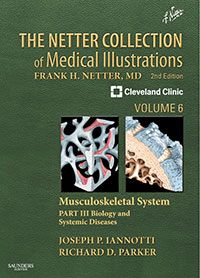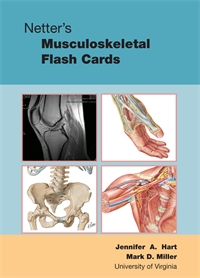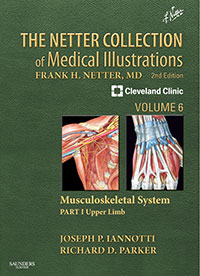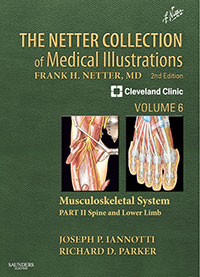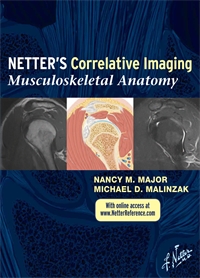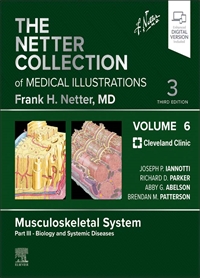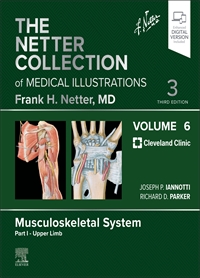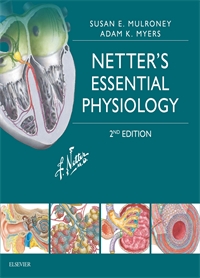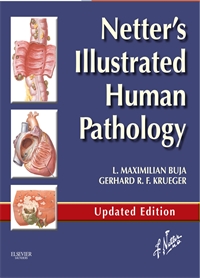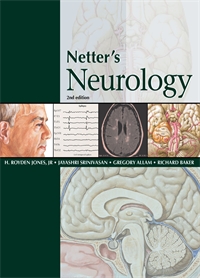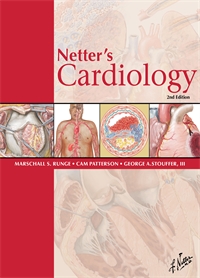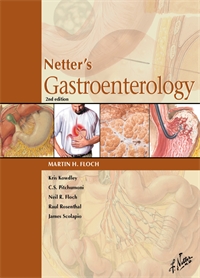Collection of Medical Illustrations, Musculoskeletal System - Volume 6, Part III - 2E
Author: Joseph P. Iannotti, Richard D. Parker
ISBN: 9781416063797
Embryology
- Page 2: Amphioxus and Human Embryo at 16 Days
- Page 3: Differentiation of Somites Into Myotomes, Sclerotomes, and Dermatomes
- Page 4: Progressive Stages in Formation of Vertebral Column, Dermatomes, and Myotomes and Mesenchymal Precartilage Primordia of Axial and Appendicular Skeletons at 5 Weeks
- Page 5: Fate of Body, Costal Process, and Neural Arch Components of Vertebral Column, With Sites and Time of Appearance of Ossification Centers
- Page 6: First and Second Cervical Vertebrae at Birth AND Development of Sternum
- Page 7: Early Development of Skull
- Page 8: Skeleton of Full-Term Newborn
- Page 9: Changes in Position of Limbs Before Birth; Precartilage Mesenchymal Cell Concentrations of Appendicular Skeleton at 6 Weeks
- Page 10: Changes in Ventral Dermatome Pattern During Limb Development
- Page 11: Initial Bone Formation in Mesenchyme; Early Stages of Flat Bone Formation
- Page 12: Secondary Osteon (Haversian System)
- Page 13: Growth and Ossification of Long Bones
- Page 14: Growth in Width of a Bone and Osteon Remodeling
- Page 15: Remodeling: Maintenance of Basic Form and Proportions of Bone During Growth
- Page 16: Development of Three Types of Synovial Joints
- Page 17: Segmental Distribution of Myotomes in Fetus of 6 Weeks; Developing Skeletal Muscles at 8 Weeks
- Page 18: Devleopment of Skeletal Msucle Fibers
- Page 19: Cross Sections of Body at 6 to 7 Weeks
- Page 20: Prenatal Development of Perineal Musculature
- Page 21: Origins and Innervations of Pharyngeal Arch and Somite Myotome Muscles
- Page 22: Branchiomeric and Adjacent Myotomic Muscles at Birth
Physiology
- Page 25: Microscopic Appearance of Skeletal Muscle Fibers
- Page 26: Organization of Skeletal Muscle
- Page 27: Intrinsic Bloody and Nerve Supply of Skeletal Muscle
- Page 28: Composition and Structure of Myofilaments
- Page 29: Muscle Contraction and Relaxation
- Page 30: Biochemical Mechanics of Muscle Contraction
- Page 31: Sarcoplasmic Reticulum and Initiation of Muscle Contraction
- Page 32: Initiation of Muscle Contraction by Electric Impulse and Calcium Movement
- Page 33: Motor Unit
- Page 34: Structure of Neuromuscular Junction
- Page 35: Physiology of Neuromuscular Junction
- Page 36: Pharmacology of Neuromuscular Transmission
- Page 37: Physiology of Muscle Contraction
- Page 38: Energy Metabolism of Muscle
- Page 39: Muscle Fiber Types
- Page 41: Structure, Physiology, and Pathophysiology of Growth Plate (Continued)
- Page 42: Structure and Blood Supply of Growth Plate
- Page 43: Peripheral Fibrocartilaginous Element of Growth Plate
- Page 44: Composition and Structure of Cartilage
- Page 45: Bone Cells and Bone Deposition
- Page 46: Composition of Bone
- Page 47: Structure of Cortical (Compact) Bone
- Page 48: Structure of Trabecular Bone
- Page 49: Formation and Composition of Collagen
- Page 50: Formation and Composition of Proteoglycan
- Page 51: Structure and Function of Synovial Membrane
- Page 52: Histology of Connective Tissue
- Page 53: Dynamics of Bone Homeostasis
- Page 54: Regulation of Calcium and Phosphate Metabolism
- Page 55: Effects of Bone Formation and Bone Resorption on Skeletal Mass
- Page 56: Four Mechanisms of Bone Mass Regulation
- Page 57: Normal Calcium and Phosphate Metabolism
- Page 59: Nutritional Calcium Deficiency
- Page 60: Effects of Disuse and Stress (Weight Bearing) on Bone Mass
- Page 61: Musculoskeletal Effects of Weightlessness (Space Flight)
- Page 62: Bone Architecture and Remodeling in Relation to Stress
- Page 63: Stress-Generated Electric Potentials in Bone
- Page 64: Bioelectric Potentials in Bone
- Page 65: Age-Related Changes in Bone Geometry
- Page 66: Age-Related Changes in Bone Geometry (Continued)
Metabolic Diseases
- Page 68: Parathyroid Hormone
- Page 69: Pathophysiology of Primary Hyperparathyroidism
- Page 70: Clinical Manifestations of Primary Hyperparathyroidism
- Page 71: Differential Diagnosis of Hypercalcemic States
- Page 72: Pathologic Physiology of Hypoparathyroidism
- Page 74: Clinical Manifestations of Chronic Hypoparathyroidism
- Page 75: Clinical Manifestations of Hypocalcemia
- Page 76: Pseudohypoparathyroidism
- Page 77: Mechanism of Parathyroid Hormone Activity on End Organ
- Page 78: Mechanism of Parathyroid Hormone Activity on End Organ: Cyclic AMP Response to PTH
- Page 79: Clinical Guide to Parathyroid Hormone Assay: Different Forms of PTH and Their Detection by Whole (Bioactive) PTH and I-PTH Immunometric Assays
- Page 80: Clinical Guide to Parathyroid Hormone Assay (Continued)
- Page 82: Adult Osteomalacia
- Page 83: Nutritional Deficiency: Rickets and Osteomalacia
- Page 84: Vitamin D–Resistant Rickets and Osteomalacia due to Proximal Renal Tubular Defects (Hypophosphatemic Rachitic Syndromes)
- Page 85: Vitamin D–Resistant Rickets and Osteomalacia due to Proximal and Distal Renal Tubular Defects
- Page 86: Vitamin D–Dependent (Pseudodeficiency) Rickets and Osteomalacia
- Page 87: Vitamin D–Resistant Rickets and Osteomalacia due to Renal Tubular Acidosis
- Page 88: Metabolic Aberrations of Renal Osteodystrophy
- Page 89: Rickets, Osteomalacia, and Renal Osteodystrophy
- Page 90: Bony Manifestations of Renal Osteodystrophy
- Page 91: Vascular and Soft Tissue Calcification in Secondary Hyperparathyroidism of Chronic Renal Disease
- Page 92: Clinical Guide to Vitamin D Measurement
- Page 93: Hypophosphatasia
- Page 94: Causes of Osteoporosis
- Page 96: Clinical Manifestations of Osteoporosis
- Page 97: Progressive Spinal Deformity in Osteoporosis
- Page 98: Radiology of Osteopenia
- Page 99: Radiology of Osteopenia (Continued)
- Page 100: Radiology of Osteopenia (Continued)
- Page 101: Transiliac Bone Biopsy
- Page 102: Treatment of Complications of Spinal Osteoporosis
- Page 104: Treatment of Osteoporosis (Continued)
- Page 106: Osteogenesis Imperfecta Type I
- Page 107: Osteogenesis Imperfecta Type III
- Page 108: Marfan Syndrome
- Page 109: Marfan Syndrome (Continued)
- Page 111: Ehlers-Danlos Syndromes (Continued)
- Page 112: Osteopetrosis (Albers-Sch²∂nberg Disease)
- Page 113: Paget Disease of Bone
- Page 114: Paget Disease of Bone (Continued)
- Page 115: Pathophysiology and Treatment of Paget Disease of Bone
- Page 116: Fibrodysplasia Ossificans Progressiva
Congenital and Developmental Disorders
- Page 119: Achondroplasia - Clinical Manifestations (Continued)
- Page 120: Achondroplasia - Clinical Manifestations of Spine
- Page 121: Achondroplasia - Diagnostic Testing
- Page 122: Hypochondroplasia
- Page 123: Diastrophic Dwarfism
- Page 124: Pseudoachondroplasia
- Page 125: Metaphyseal Chondrodysplasia, McKusick Type
- Page 126: Metaphyseal Chondrodysplasia, Schmid Type
- Page 127: Chondrodysplasia Punctata
- Page 128: Chondroectodermal Dysplasia (Ellis-van Creveld Syndrome), Grebe Chondrodysplasia, and Acromesomelic Dysplasia
- Page 129: Multiple Epiphyseal Dysplasia, Fairbank Type
- Page 130: Pycnodysostosis (Pyknodysostosis)
- Page 131: Camptomelic (Campomelic) Dysplasia
- Page 132: Spondyloepiphyseal Dysplasia Tarda and Spondyloepiphyseal Dysplasia Congenita
- Page 133: Spondylocostal Dysostosis and Dyggve-Melchior-Clausen Dysplasia
- Page 134: Kniest Dysplasia
- Page 135: Mucopolysaccharidoses
- Page 136: Principles of Treatment of Skeletal Dysplasias
- Page 137: Diagnostic Criteria and Cutaneous Lesions in Neurofibromatosis
- Page 138: Cutaneous Lesions in Neurofibromatosis
- Page 139: Spinal Deformities in Neurofibromatosis
- Page 140: Neurofibromatosis
- Page 141: Arthrogryposis Multiplex Congenita
- Page 142: Fibrodysplasia Ossificans Progressiva and Progressive Diaphyseal Dysplasia
- Page 143: Osteopetrosis and Osteopoikilosis
- Page 144: Melorheostosis
- Page 145: Congenital Elevation of Scapula, Absence of Clavicle, and Pseudarthrosis of Clavicle
- Page 146: Madelung Deformity
- Page 147: Congenital Bowing of the Tibia
- Page 148: Congenital Pseudoarthrosis of the Tibia and Dislocation of the Knee
- Page 198: Ankylosing Spondylitis
- Page 199: Ankylosing Spondylitis (Continued)
- Page 200: Ankylosing Spondylitis (Continued) Degenerative Changes in the Cervical Vertebrae
- Page 201: Psoriatic Arthritis
- Page 202: Reactive Arthritis (Formerly Reiter Syndrome)
- Page 203: Infectious Arthritis
- Page 204: Tuberculous Arthritis
- Page 205: Hemophilic Arthritis
- Page 206: Neuropathic Joint Disease
- Page 207: Gouty Arthritis
- Page 208: Tophaceous Gout
- Page 209: Articular Chondrocalcinosis (Pseudogout)
- Page 210: Nonarticular Rheumatism
- Page 211: Clinical Manifestations of Polymyalgia Rheumatica and Giant Cell Arteritis
- Page 212: Imaging of Polymyalgia Rheumatica and Giant Cell Arteritis
- Page 213: Fibromyalgia
- Page 214: Pathophysiology of Autoinflammatory Syndromes
- Page 216: Joint and Central Nervous System Findings in Autoinflammatory Syndromes
- Page 217: Vasculitis: Vessel Distribution
- Page 218: Vasculitis: Clinical and Histologic Features of Granulomatosis with Polyangitis (Wegener)
- Page 220: Renal Lesions in Systemic Lupus Erythematosus (SLE)
- Page 221: Cutaneous Lupus Band Test
- Page 222: Lupus Erythematosus of the Heart
- Page 223: Antiphospholipid Syndrome
- Page 225: Scleroderma—Clinical Manifestations
- Page 226: Scleroderma—Clinical Findings
- Page 227: Scleroderma—Radiographic Findings of Acro-osteolysis and Calcinosis Cutis
- Page 228: Polymyositis and Dermatomyositis
- Page 229: Polymyositis and Dermatomyositis (Continued)
- Page 230: Primary Angiitis of the Central Nervous System
- Page 232: Behçet Syndrome
- Page 233: Behçet Syndrome (Continued)
- Page 149: Clinical Manifestations
- Page 150: Evaluation of Leg-Length Discrepancy
- Page 151: Charts for Timing Growth Arrest and Determining Amount of Limb Lengthening to Achieve Limb-Length Equality at Maturity
- Page 152: Growth Arrest
- Page 153: Ilizarov and De Bastiani Techniques for Limb Lengthening
- Page 154: Growth Factors
- Page 155: Foot Prehensility in Amelia
- Page 156: Failure of Formation of Parts: Transverse Arrest
- Page 157: Failure of Formation of Parts: Transverse Arrest (Continued)
- Page 158: Failure of Formation of Parts: Transverse Arrest (Continued)
- Page 159: Failure of Formation of Parts: Transverse Arrest (Continued)
- Page 160: Failure of Formation of Parts: Transverse Arrest (Continued)
- Page 161: Failure of Formation of Parts: Transverse Arrest (Continued)
- Page 162: Failure of Formation of Parts: Transverse Arrest (Continued)
- Page 163: Failure of Formation of Parts: Longitudinal Arrest
- Page 164: Failure of Formation of Parts: Longitudinal Arrest (Continued)
- Page 165: Failure of Formation of Parts: Longitudinal Arrest (Continued)
- Page 166: Failure of Formation of Parts: Longitudinal Arrest (Continued)
- Page 167: Duplication of Parts, Overgrowth, and Congenital Constriction Band Syndrome
Rheumatic Diseases
- Page 170: Joint Pathology in Rheumatoid Arthritis
- Page 171: Early and Moderate Hand Involvement In Rheumatoid Arthritis
- Page 172: Advanced Hand Involvement in Rheumatoid Arthritis
- Page 173: Foot Involvement in Rheumatoid Arthritis
- Page 174: Knee, Shoulder, and Hip Joint Involvement in Rheumatoid Arthritis
- Page 175: Extra-articular Manifestations in Rheumatoid Arthritis
- Page 176: Extra-articular Manifestations in Rheumatoid Arthritis (Continued)
- Page 177: Immunologic Features in Rheumatoid Arthritis
- Page 178: Variable Clinical Course of Adult Rheumatoid Arthritis - Prognosis Difficult in Early Stage
- Page 182: Techniques for Aspiration of Joint Fluid
- Page 183: Synovial Fluid Examination
- Page 184: Synovial Fluid Examination (Continued)
- Page 186: Systemic Juvenile Arthritis (Continued)
- Page 188: Lower Limb Involvement in Juvenile Arthritis
- Page 189: Ocular Manifestations in Juvenile Arthritis
- Page 190: Sequelae of Juvenile Arthritis
- Page 191: Distribution of Joint Invovlement in Osteoarthritis
- Page 193: Clinical Findings in Osteoarthritis (Continued)
- Page 194: Hand Involvement in Osteoarthritis
- Page 195: Hip Joint Involvement in Osteoarthritis
- Page 196: Degenerative Changes
- Page 197: Spine Involvement in Osteoarthritis
Tumors of Musculoskeletal System
- Page 236: Initial Evaluation and Staging of Musculoskeletal Tumors
- Page 238: Osteoid Osteoma
- Page 239: Osteoblastoma
- Page 240: Enchondroma
- Page 241: Periosteal Chondroma
- Page 242: Osteocartilaginous Exostosis (Osteochondroma)
- Page 243: Chondroblastoma and Chondromyxoid Fibroma
- Page 244: Fibrous Dysplasia
- Page 245: Nonossifying Fibroma and Desmoplastic Fibroma
- Page 246: Eosinophilic Granuloma
- Page 247: Aneurysmal Bone Cyst
- Page 248: Simple Bone Cyst
- Page 249: Giant Cell Tumor of Bone
- Page 250: Osteosarcoma
- Page 251: Osteosarcoma (Continued)
- Page 252: Osteosarcoma (Continued)
- Page 253: Chondrosarcoma
- Page 254: Fibrous Histiocytoma and Fibrosarcoma of Bone
- Page 255: Reticuloendothelial Tumors—Ewing Sarcoma
- Page 256: Reticuloendothelial Tumors—Myeloma
- Page 257: Adamantinoma
- Page 258: Tumors Metastatic to Bone
- Page 259: Desmoid, Fibromatosis, and Hemangioma
- Page 260: Lipoma, Neurofibroma, and Myositis Ossificans
- Page 261: Sarcomas of Soft Tissue
- Page 262: Sarcomas of Soft Tissue (Continued)
- Page 263: Sarcomas of Soft Tissue (Continued)
- Page 264: Tumor Biopsy
- Page 265: Surgical Margins
- Page 266: Reconstruction after Partial Excision or Curettage of Bone (Fracture Prophylaxis)
- Page 267: Limb-Salvage Procedures for Reconstruction
- Page 268: Radiological Findings in Limb-Salvage Procedures
- Page 269: Limb-Salvage Procedures
Injury to Musculoskeletal System
- Page 272: Closed Soft Tissue Injuries
- Page 274: Treatment of Open Soft Tissue Wounds
- Page 275: Pressure Ulcer
- Page 276: Excision of Deep Pressure Ulcer
- Page 277: Classification of Burns
- Page 278: Causes and Clinical Types of Burns
- Page 279: Escharotomy for Burns
- Page 280: Prevention of Infection in Burn Wounds
- Page 281: Metabolic and Systemic Effects of Burns
- Page 282: Excision and Grafting for Burns
- Page 283: Etiology of Compartment Syndrome
- Page 284: Pathophysiology of Compartment and Crush Syndromes
- Page 285: Acute Anterior Compartment Syndrome
- Page 286: Measurement of Intracompartmental Pressure
- Page 287: Incisions for Compartment Syndrome of Forearm and Hand
- Page 288: Incisions for Compartment Syndrome of Leg
- Page 289: Healing of Incised, Sutured Skin Wound
- Page 290: Healing of Excised Skin Wound
- Page 291: Types of Joint Injury
- Page 292: Classification of Fracture
- Page 293: Types of Displacement
- Page 294: Types of Fracture
- Page 295: Healing of Fracture
- Page 296: Primary Union
- Page 297: Factors that Promote or Delay Bone Healing
Soft Tissue Infections
- Page 300: Septic Joint
- Page 301: Etiology and Prevalence of Hematogenous Osteomyelitis
- Page 302: Pathogenesis Of Hematogenous Osteomyelitis
- Page 303: Clinical Manifestations of Hematogenous Osteomyelitis
- Page 304: Direct (Nonhematogenous) Causes of Osteomyelitis
- Page 305: Direct (Nonhematogenous) Causes of Osteomyelitis (Continued)
- Page 306: Osteomyelitis After Open Fracture
- Page 307: Recurrent Postoperative Osteomyelitis
- Page 308: Delayed Posttraumatic Osteomyelitis in Diabetic Patient
Complications of Fracture
- Page 310: Neurovascular Injury
- Page 311: Adult Respiratory Distress Syndrome
- Page 312: Infection
- Page 313: Surgical Management of Open Fractures
- Page 314: Gas Gangrene
- Page 315: Implant Failure
- Page 316: Malunion of Fracture
- Page 317: Growth Deformity
- Page 318: Posttraumatic Osteoarthritis
- Page 319: Osteonecrosis
- Page 320: Joint Stiffness
- Page 321: Complex Regional Pain Syndrome
- Page 322: Nonunion of Fracture
- Page 323: Surgical Management of Nonunion
- Page 324: Electric Stimulation of Bone Growth
- Page 325: Noninvasive Coupling Methods of Electric Stimulation of Bone
